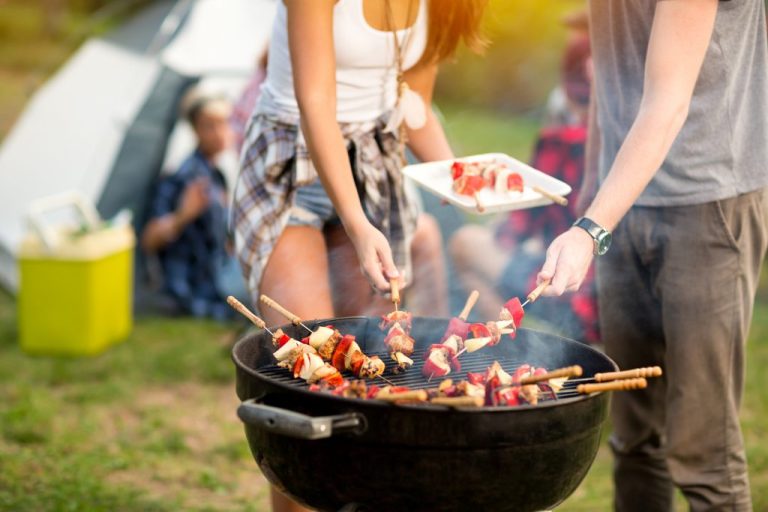Finally it’s barbecue season!
A barbecue should be a safe and enjoyable experience but it’s all too easy to be distracted when you have friends and family around you whilst cooking. According to ROSPA, the last time figures were collected through the Home and Leisure Accident Surveillance System (HASS/LASS), in 2002, an estimated 1800 people visited A&E in the UK having had an accident involving a barbecue.
The most common types of barbecue-related accidents as shown by the HASS/LASS figures were:
- Burn/scald/other injury related to fire or flame – 800
- Cut/tear by sharp edges – 200
To avoid injuries or damage to property, follow these simple precautions:
General Safety
• Make sure your barbecue is in good working order.
• Ensure the barbecue is on a flat, stable site, well away from a shed, overhanging trees or shrubs, fences and garden furniture.
• Keep children, garden games and pets well away from the cooking area.
• Never leave the barbecue unattended and never light it an enclosed space.
• Keep a bucket of water or sand nearby for emergencies.
• Ensure the barbecue is cool before attempting to move it, particularly any metal parts.
• Make sure the barbecue is fully extinguished before you leave it.
Charcoal Barbecues
• Use only enough charcoal to cover the base to a depth of about 50mm (2 inches).
• Only use recognised fire lighters or starter fuel and only on cold coals – use the minimum necessary and never use petrol, paraffin or another accelerant.
• Never put hot ashes straight into a dustbin or wheelie bin – they could melt the plastic and cause a fire.
• Disposable barbecues should be placed on an even surface, either on bricks or paving slabs
Gas Barbecues
• Make sure the tap is turned off before changing the gas cylinder.
• Change cylinders outdoors if possible or in a well ventilated area.
• If you suspect a leak to the cylinder or pipe work, brush soapy water around the joints and watch for bubbles – tighten to fix but do not overtighten.
• After cooking, turn off the gas cylinder before turning off at the controls to ensure any residual gas in the pipe work is used up.
Fire Safety in the Countryside
Every year fire is responsible for the destruction of thousands of acres of countryside, open spaces and wildlife habitat. Particular care needs to be taken in hot, dry weather. Some fires are started deliberately but by following a few simple precautions, many others can be prevented:
• Dispose of smoking materials properly and make sure they are completely extinguished.
• Don’t leave camp fires or barbecues unattended and extinguish them properly after use.
• Clear away bottles, glasses and any broken glass to prevent them magnifying the sun’s rays and starting a fire.
• Explain to children the dangers of playing with lighted fires.
If fire breaks out, call the Fire & Rescue Service immediately. When specifying your location, mention any landmarks – perhaps a church or pub – and if phoning from a phone box, stay nearby so you can direct the fire appliances to the scene.
Don’t attempt to fight the fire yourself unless it is very small – grass and crop fires can travel very quickly.
Be Carbon Monoxide Aware
Never use fuel-burning devices (e.g. disposable barbecues, camping stoves, camping heaters, lanterns, and charcoal grills) inside a tent.
Using these indoors can cause Carbon Monoxide (CO) poisoning.
They give off fumes for hours and hours after you have used them – levels high enough to result in CO poisoning.
To avoid hazardous CO exposures, fuel-burning equipment should never be used inside a tent, camper, or other enclosed shelter.
Fuel-burning equipment can include:
•camping stoves
•camping heaters
•lanterns
•charcoal grills
•disposable barbecues
Opening tent flaps, doors, or windows is insufficient to prevent build-up of CO concentrations from these devices.
Also, when using fuel-burning devices outdoors, the exhaust should not vent into enclosed shelters.
Building an open fire
• Never build a fire where the soil is of peat.
• Build it well away from any tents – especially in windy weather (at least 10 metres).
• Clear the area of grass, leaves and brush away to form a circle of earth around the fire.
• A fire stack should be made so that it will collapse inwards when burning.
• Do not leave the fire unattended and watch for flying embers or sparks.
• Make sure you extinguish the fire before going to bed or when you leave.
Sources: www.fireservice.co.uk ; www.rospa.com ; www.cheshirefire.gov.uk

